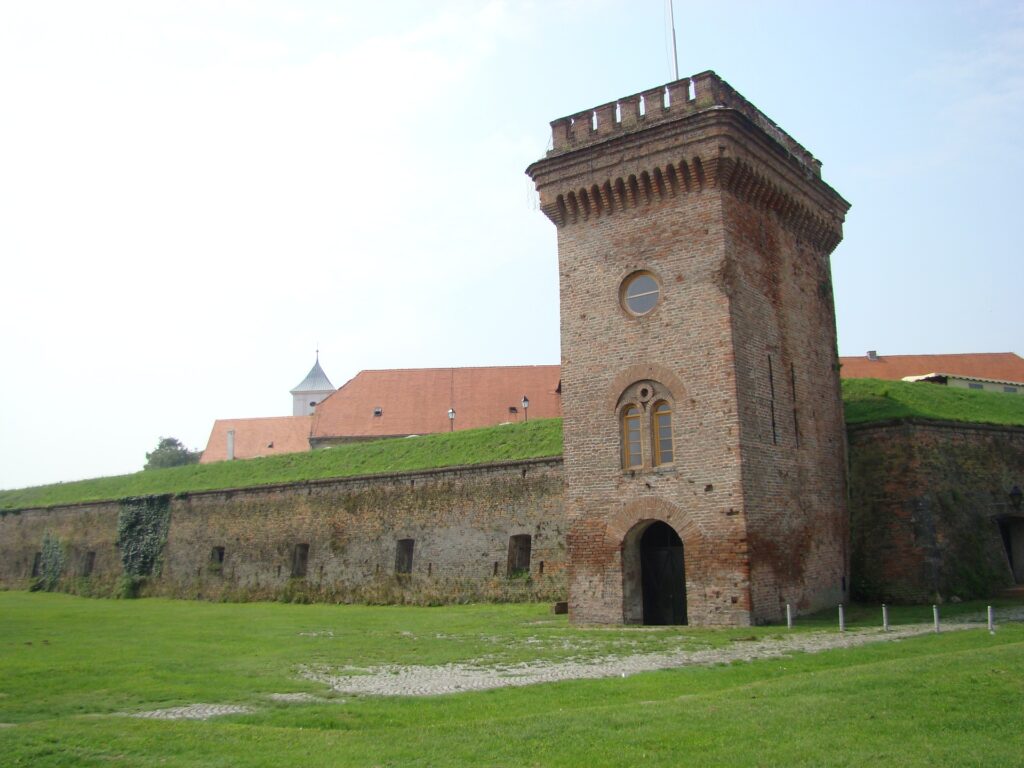The 9th International Conference of The European Network of Picturebook Research
28–29 September 2023
Osijek, Croatia
Organised by the European Network of Picturebook Research and the Croatian Association of Researchers in Children’s Literature (CARCL)
Places to visit in Osijek
Tvrđa (The Fortress)
The most famous tourist location in Osijek is the old town core of Tvrđa. Tvrđa was once a military fortress surrounded by walls, and today, the remains of the city walls and the Water Gate, the only remaining entrance to the old town, are located towards the bank of the river Drava. Within Tvrđa, there are many interesting historical sites, churches, schools, the Rectorate building, and catering establishments, and Tvrđa is also the center of Osijek’s nightlife. In the center of Tvrđa, there is the Square of the Holy Trinity, which features the Plague Pillar, a votive monument to the Holy Trinity erected after an epidemic of plague in the 18th century, intended to protect the population from this disease. This monument is considered the most beautiful Baroque monument in Croatia. At the southern entrance to Tvrđa, there is the Rondel of Giants, a monument erected in 2006, with a fountain in the center and busts of famous and deserving Osijek citizens surrounding it.
The Cathedral of St. Peter and St. Paul (Osijek Cathedral)
In the city center is the Church of St. Peter and St. Paul, the co-cathedral of the Đakovo-Osijek Archdiocese, better known as Osijek Cathedral. The church was built at the end of the 19th century in just four years (1894-1898) by the initiative of Bishop Josip Juraj Strossmayer. It was built in the neo-Gothic style and is recognizable by its red brick facade. St. Peter and St. Paul Cathedral stands out for its height, and its bell tower is 90 meters high, making it the second tallest bell tower in Croatia and Southeast Europe.
Ante Starčević Square (Main Square)
The Main Square is located next to the cathedral and features a monument to Dr. Ante Starčević, a 19th-century Croatian politician who is considered the “father of the homeland” because of his efforts for Croatian independence, as well as a statue called “Group of Citizens” and a fountain. The square was built in the 17th century and is the oldest square in the Upper Town. In the past, it was an important meeting place and a center for trade.
Trg slobode (Freedom Square)
Trg slobode is a pedestrian zone in the city center, near Ante Starčević Square. Several monuments can be found on this square, including Osijek’s “Šetač,” a statue of writer August Cesarec, and a monument to defenders and victims of the Croatian War of Independence.
European Avenue
European Avenue stretches from the city center to Tvrđa and is one of the most beautiful streets in Osijek. The buildings and palaces on this avenue were built in the Secession style at the end of the 19th and beginning of the 20th centuries, a period when Osijek was economically and culturally developed, and investments were made in culture and architecture. Today, this avenue is home to the City and University Library, the Museum of Fine Arts, the courthouse (Judicial Palace), the Post Office Palace built in the style of the so-called Hungarian Secession, and many offices.
Osijek Parks
The most beautiful Osijek parks are located near European Avenue, connecting it to Tvrđa in the east and the city center in the west. Osijek is a city with many parks
and tree-lined avenues and is one of the cities with the most green spaces in Croatia. The Park of King Petar Krešimir IV is located between European Avenue and Tvrđa, and the French-style garden architecture was used in its design. Continuing eastward is the Park of King Držislav. Across the street is the Park of King Tomislav, the largest park in Osijek, which connects European Avenue to Tvrđa and European Avenue to the Drava River. From European Avenue to the main Osijek square, there is the Sakuntala Park, designed in the style of the romantic period of Secessionism, with the Urania and Europa cinemas on its edges. The Urania cinema building is considered one of the most beautiful Secessionist creations in the city.
The Promenade, a walking path along the Drava River
Osijek has a promenade that stretches along both banks of the Drava River. Along the left bank of Osijek’s promenade are several interesting locations, the most famous of which is the Suspension Pedestrian Bridge. The Promenade is a favorite walking area for locals, and from the Suspension Pedestrian Bridge towards the west, in the area of Winter Port, there are numerous cafes and restaurants, making it the most popular part of the Promenade. Continuing eastward along the Promenade is the replica of a mill, a replica of the former mills that existed on the Drava River from the 18th century to the beginning of the 20th century when the milling trade was highly valued and developed in Slavonia. At the continuation of the Promenade towards the east on the right bank, it leads to Tvrđa and all the way to Lower Town. On the left bank, east of the Suspension Pedestrian Bridge, is Copacabana, the most famous Osijek beach, which also has the most beautiful view of the city. A bike path runs along the entire promenade, making it possible to explore the entire area by bike, a very popular means of transportation throughout the city of Osijek.
The Osijek Zoo
The Osijek Zoo is located on the left bank of the Drava River and is the largest zoo in Croatia in terms of area. It is located in an interesting location, in a peaceful area near the Drava River and the Podravina forest, making it a great choice for spending time outside of the city hustle and bustle.
Interesting websites about Osijek:
https://topdestinacije.hr/osijek-znamenitosti-grada-na-dravi/

